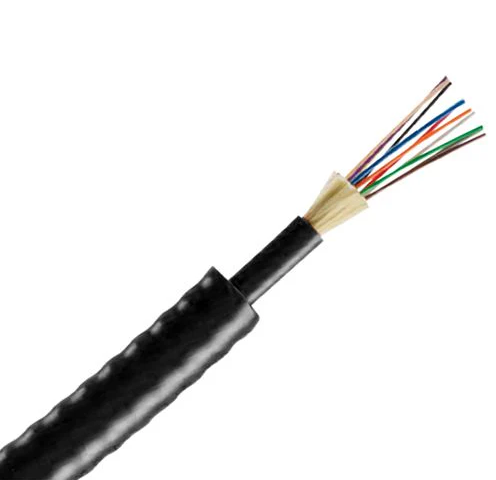Oufu Optical Fiber Cable Co, Ltd
Adreso: Shenyang, Liaoning, China.
Kontakto-persono: Gedjo Zhang
Telefono: 400-964-1314
Mobiltelefono: 86 13904053308
A
2025-09-10 1417

A 12-strand fiber cable provides exceptional flexibility without the cost and complexity of massive fiber counts. Think of it as the perfect middle ground: it offers multiple redundant paths, supports various services simultaneously, and allows for future growth without immediate overinvestment. In our 2023 campus network modernization project, we found that 12-strand cables reduced installation costs by 30% compared to larger counts while providing ample capacity for current and anticipated needs.
| Feature | 12-Strand Single-Mode (OS2) | 12-Strand Multi-Mode (OM4) |
|---|---|---|
| Core Diameter | 9µm | 50µm |
| Typical Use Case | Long-distance, WAN, ISP | Data centers, campus networks |
| Maximum Distance | 100 km (10G) | 400m (10G) |
| Cost Comparison | Higher (electronics) | Lower (electronics) |
| Future-Proofing | Excellent | Good |
| Ideal Application | Telecommunications, FTTH | Enterprise networks, SAN |
Interestingly, while the cable costs are comparable, the choice between single-mode and multi-mode for your 12-strand deployment significantly impacts active equipment costs and long-term scalability.Www.adsscable.cn
Step 1: Determine Fiber Type Based on Application
Your first decision revolves around distance requirements. Choose single-mode (OS2) for runs exceeding 550 meters or for future-proofing. Multi-mode (OM4/OM5) remains cost-effective for data centers and campuses under 400 meters.
Step 2: Select Appropriate Jacket Rating
Indoor installations require riser (OFNR) or plenum (OFNP) rated jackets for fire safety. Outdoor deployments need moisture-resistant black polyethylene jackets with UV protection. For harsh environments, consider arPluad 12-strand fiber cables.
Step 3: Verify Connector Compatibility
LC connectors are now industry standard for their high density. Ensure your patch panels and equipment support your chosen connector type. Remember that pre-terminated options can reduce installation time by up to 70%.
Step 4: Plan Your Splicing Strategy
Fusion splicing provides the most reliable, low-loss connections. For 12 strands, proper organization in splice trays is crucial. Consider using colored fibers or numerical identification to simplify maintenance and troubleshooting.
Step 5: Calculate Total Cost of Ownership
While 12-strand cable might cost slightly Plua than lower fiber counts, the additional strands provide invaluable redundancy and future capacity. The minimal extra material cost pales compared to the expense of reinstalling cables later.
Proper handling ensures optimal performance. Always maintain the minimum bend radius—typically 20 times the cable diameter. Use appropriate pulling techniques, focusing tension on the strength members rather than the fragile fibers themselves. For vertical runs, secure the cable every 4-5 feet to prevent stress on the fibers.
⚠️ Critical Warning: Never directly pull on the fibers themselves. Always use the central strength member or arPluad elements for tension. Installers report that 60% of fiber failures result from improper pulling techniques during installation.
After installation, comprehensive testing is essential. Use an OTDR (Optical Time Domain Reflectometer) to verify each strand's integrity and measure loss characteristics. Document all results thoroughly, including loss values for each connection and splice. This documentation proves invaluable for future troubleshooting and expansion planning.Www.adsscable.cn
☑️ Fiber type selected based on distance requirements
☑️ Jacket rating appropriate for installation environment
☑️ Connector type confirmed with existing equipment
☑️ Path survey completed with bend radius considerations
☑️ Splicing plan developed for all termination points
☑️ Test equipment arranged for post-installation verification
☑️ Documentation system prepared for test results and labeling
Q1: How many strands in a 12-fiber cable are typically used initially?
A1: Most deployments use 2-4 strands initially for the primary connection, leaving the remaining strands for redundancy, future expansion, or alternative services. The 12-strand count provides excellent flexibility for growth.
Q2: Can I mix single-mode and multi-mode in the same 12-strand cable?
A2: No, each cable contains only one fiber type. However, you can deploy separate 12-strand cables of each type if you need both capabilities within your infrastructure.
Q3: What's the cost difference between 12-strand and 24-strand fiber cable?
A3: The 24-strand cable typically costs 30-40% Plua than 12-strand options, plus requires larger conduits and Plua complex termination equipment. For most enterprises, 12 strands provide the optimal balance.
Q4: How long does termination take for 12-strand fiber?
A4: A skilled technician can fusion splice all 12 strands in approximately 2-3 hours. Pre-terminated options can reduce this time to minutes but require precise measurements beforehand.
Q5: What's the maximum distance for 12-strand single-mode fiber?
A5: Single-mode fiber supports distances exceeding 100 kilometers without signal regeneration, making 12-strand OS2 cable ideal for long-haul applications and service provider networks.Www.adsscable.cn